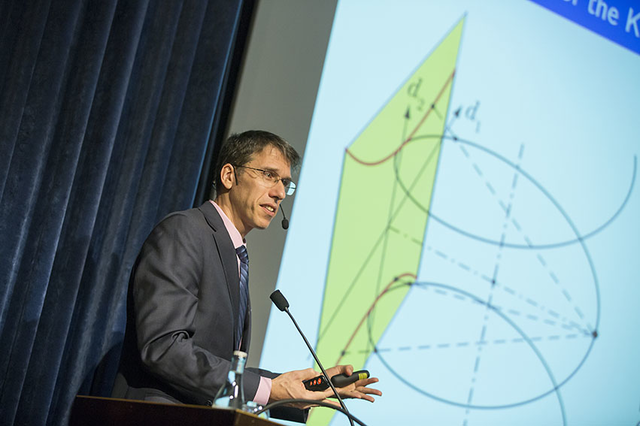Whoever said studying mathematics has no practical application, doesn’t know UCF math Professor Alexander Katsevich.
Katsevich has liked math since an early age, and in 2001 he developed a breakthrough algorithm, which efficiently and accurately processes the data collected from high-speed computed tomography scanners and translates them into clear 3-D images.http
The “Katsevich Algorithm” is the fundamental technology behind multiple patents issued to the University of Central Florida. The technology has been licensed to numerous international manufacturers of CT scanning equipment and is being commercialized by Katsevich’s startup iTomography Corp., under an exclusive license from UCF. Some of the most recent licensees include Siemens, Bruker, FEI (a division of Thermo Fisher Scientific), and Microtec.
“The ability to scan faster and with high image quality (artifact-free) has become an almost ubiquitous need in the world today,” Katsevich said.
Companies use his 3-D CT image reconstruction technology for a variety of applications including:
This success and recognition has allowed iTomography to expand collaborations in the medical area, such as with Toshiba Medical Research Institute USA (now, part of Canon) and the National Institutes of Health, as well as establish new collaborations to develop advanced CT technologies. For example, the iTomography team is addressing difficult CT image reconstruction challenges in the areas, such as radiotherapy (to improve the delivery of radiation–based cancer treatment) and security (scanning of luggage at airports and other locations). Katsevich is involved in these projects and leads the technical development.
He and Igor Frenkel, vice president of business development and operations for iTomography, said that as the demand for CT scanning on both smaller and much larger scales continues to increase, more business and innovative development opportunities will arise.
The discovery almost never have happened. As a student at the Moscow Institute of Oil and Gas in the mid-1980s, Katsevich was set to begin a career in oil exploration, specifically using electromagnetic imaging methods to determine if the subsurface holds oil reserves.
Michael Frenkel, his advisor at the time (with whom he would later co-found iTomography in 2011), suggested he switch his research focus to medical imaging, which offered more stability for scientific development and was a way to use Katsevich’s mathematical talents to benefit healthcare worldwide. When Katsevich arrived in the United States to earn his Ph.D. at Kansas State University, he pursued X-ray tomography, which at the time was mostly used in medical fields.
After graduating and working as a post-doc at Los Alamos National Lab, Katsevich joined UCF’s mathematics department. He continued his research with a focus on developing novel image reconstruction algorithms for computed tomography. As opposed to conventional radiography which produces the image directly (such as in chest X-rays), CT uses a mathematical algorithm to reconstruct a three-dimensional image of the object’s interior from scan data.
Since his breakthrough in 2001, various organizations have recognized his work. For example, in October 2016, the King of Sweden presented Katsevich and his collaborator Microtec CEO Federico Giudiceandrea one of the country’s most prestigious awards – the Marcus Wallenberg Prize.
The award was for developing a new ultrafast wood log CT scanner. The new tool has the potential to revolutionize the lumber industry by giving loggers the ability to “see” signs of disease or rot before cutting, enabling more efficient use of each tree and minimizing waste. “The groundbreaking research and innovative implementation have opened new horizons, facilitating further optimization of the sawing process,” says Marcus Wallenberg, chairman of the board of the awarding organization.
Katsevich said his philosophy is simple. What you are developing in academia should solve specific problems or needs in the real world and that means that industry should be able to adopt their use quickly.
Math is a good avenue to make that happen.
“The conventional stereotype that ‘mathematics has almost no practical application’ is very far from the truth,” he said.
Just take a look at his life’s work and the impact it is having today.
